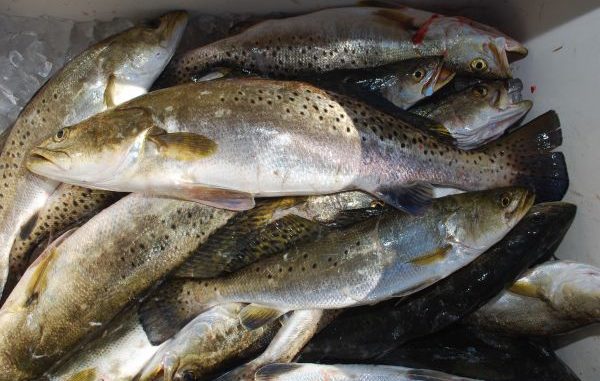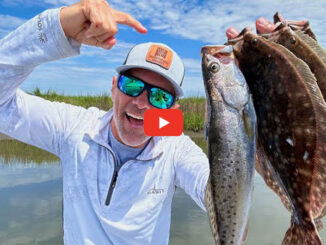
Speckled trout show a fairly dependable annual cycle. Most (remember that I said most) spend winters in low-salinity, interior waters — lakes, bayous and canals.
The hot months are spent in big bays and coastal lakes, and beaches and nearshore/offshore waters.
Summer — late April through August — is spawning seasont. The survival of speck eggs depends on dense, high-salinity waters, which keep them suspended off the bottom until they hatch. In low-salinity waters, the eggs sink to the bottom and die.
So, naturally enough, most mature fish — 12 inches and longer — are near the coastline during the warm months.
But when spawning stops, things change. And male and female fish respond differently to the changing season.
Male fish, which tend to be smaller than females, show a strong pattern of movement up into the low-salinity marshes. Few stay in high-salinity areas. That’s half the population.
Females on the other hand, scatter. Many, but not all, move with the males up into the interior. Others stay in high-salinity areas, and others are in between.
So a large percentage of the other half of the population also winters deep in the marsh. That period, when pickings are easy, is October through January.
The rest of the time — September and much of February into April — are called transition months. The fish are on the move, in transition from one pattern to another. They are tough to find and catch consistently.
Knowing that most specks are in interior marshes during the fall and winter is well and good, but that still covers a huge area. In Terrebonne Parish — Bryce Michel’s haunt — that could mean Lake DeCade and its connecting bayous, or it could mean Lake Mechant and its nearby bayous.
As a rule of thumb, Lake Mechant is a bigger producer during October and November. As it gets colder, speckled trout retreat farther into the interior, and Lake DeCade becomes about as hot a fishing spot as can be imagined. It all depends on the weather.
2011 was a mild year, and large numbers of speckled trout were in the marshes between the two lakes. Fishing tactics and techniques are the same for both areas.


